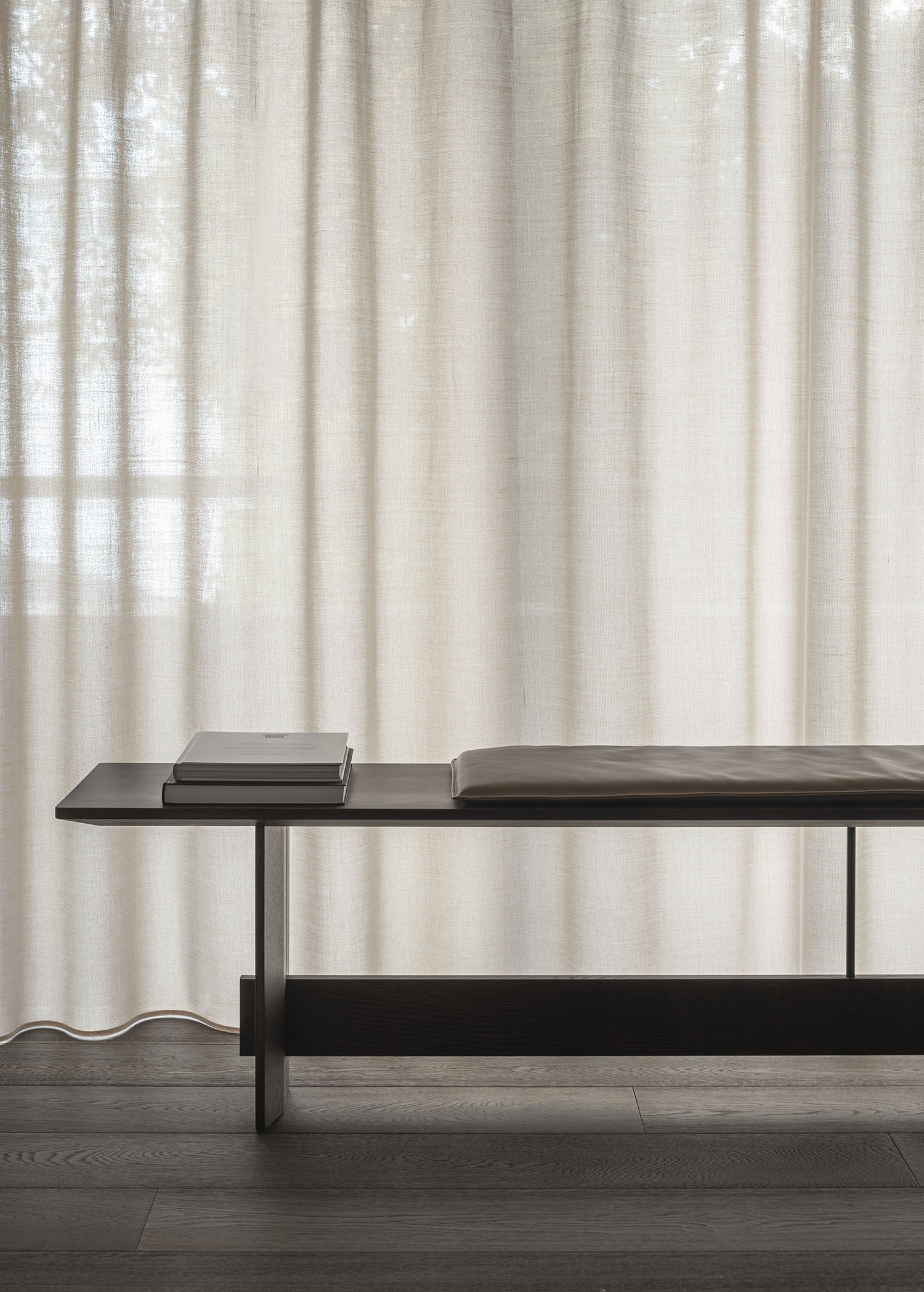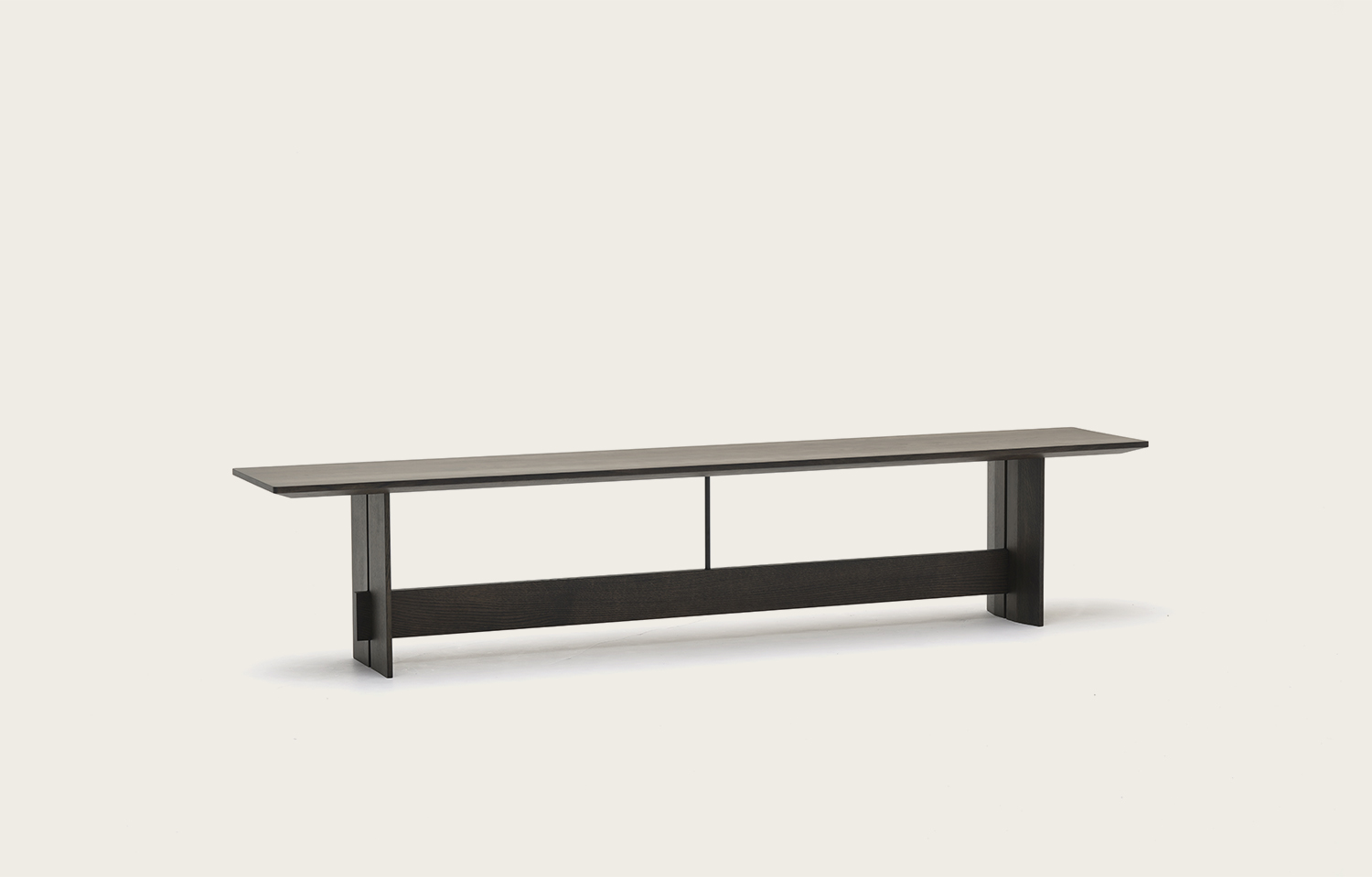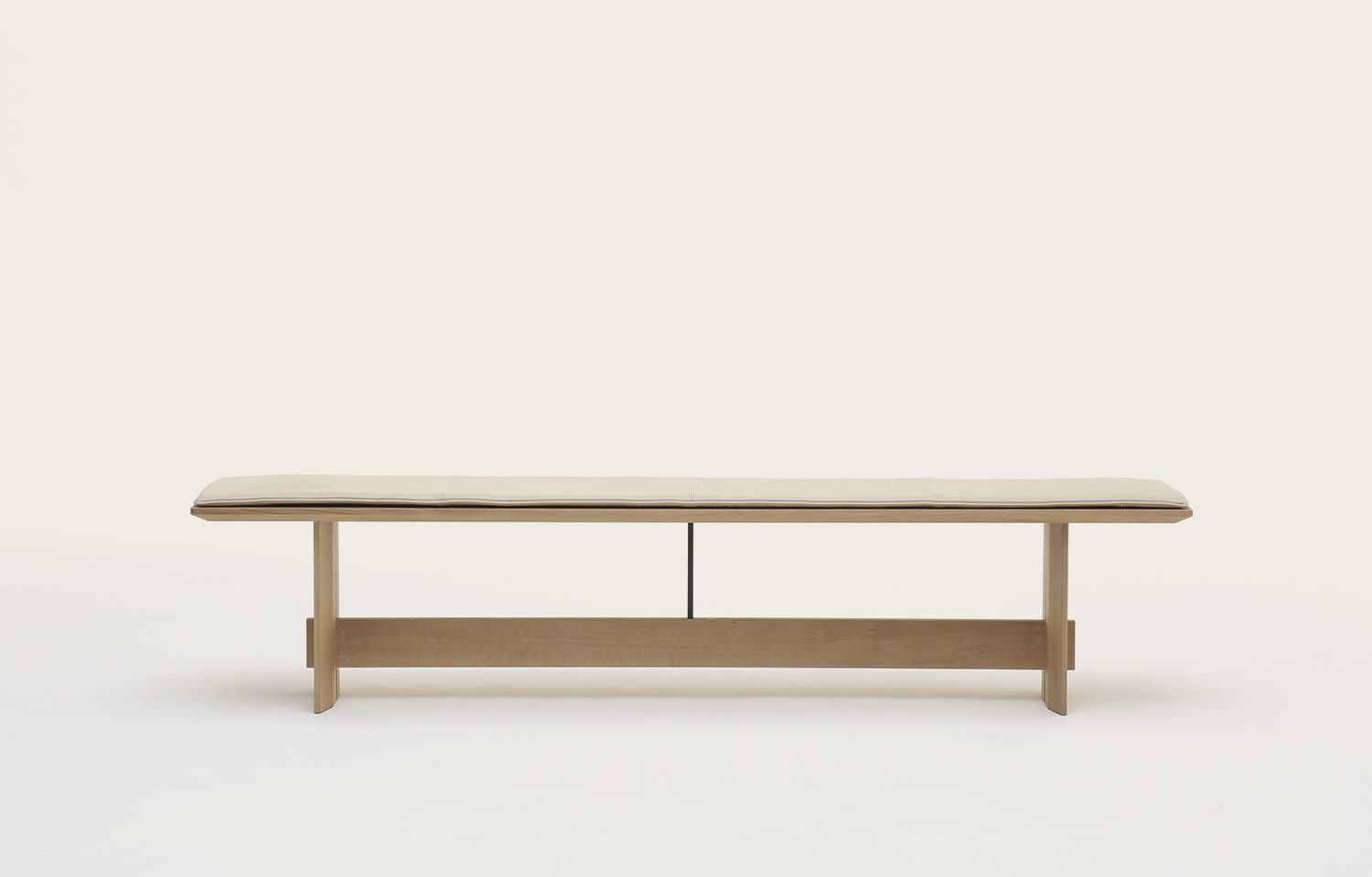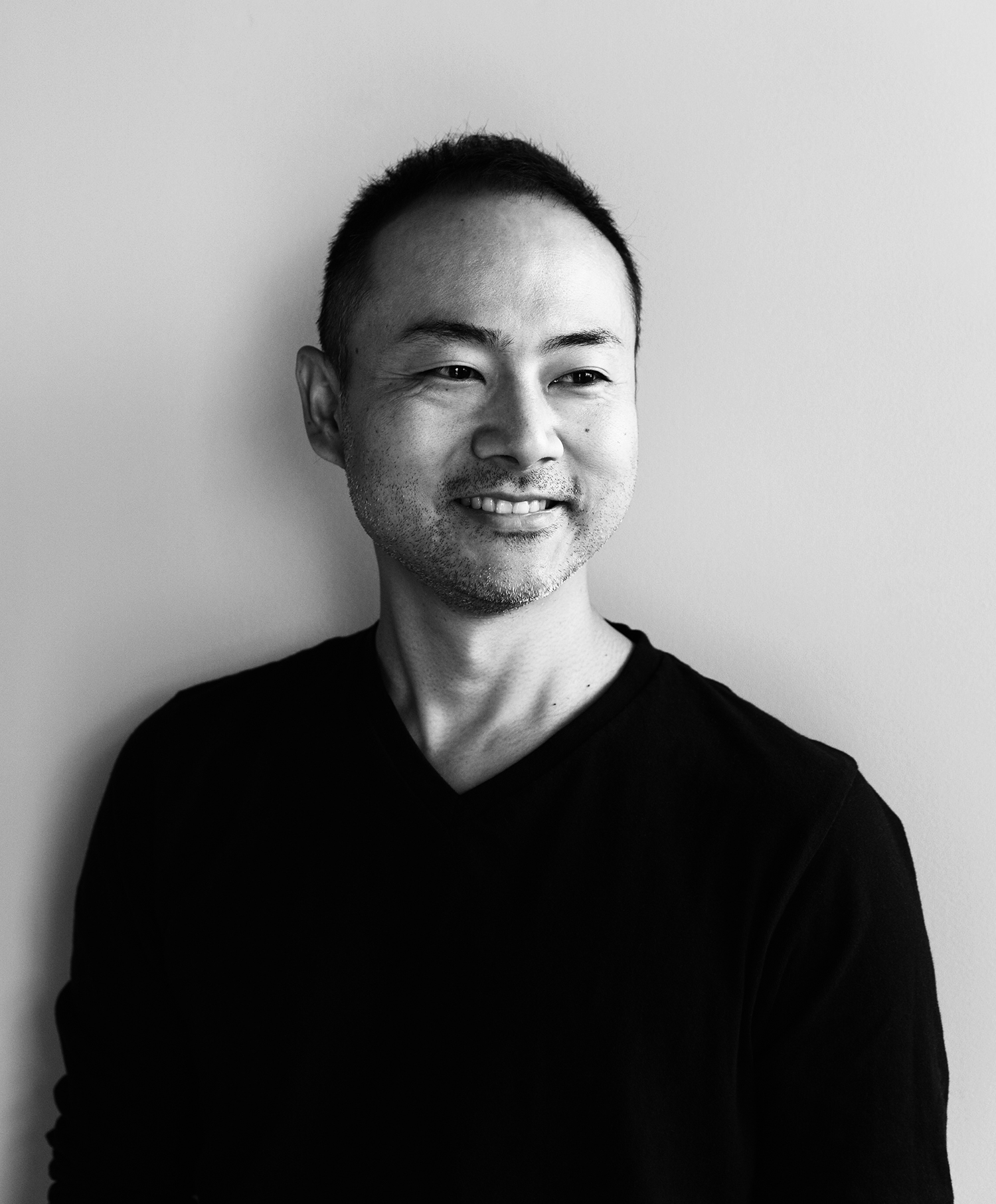The bench was designed to accommodate the need of a multi-purpose piece, both comfortable used for seating but with aesthetic capabilities befitting a display stand. The thin edges of the seat and legs gives the piece a light and exclusive appearance while the transverse strut connected to the seat with a delicate steel rod, ties the construction together visually and functionally, creating a sense of overall harmony. Dedicated cushion is also available separately.
A-B01
KEIJI ASHIZAWA







- Dimensions
- width
- 1500
- 1800
- 2000
- depth
- 350
- 350
- 350
- height
- 420
- 420
- 420
- SEAT HEIGHT
- ARM HEIGHT
- materials
- TIMBER
- PURE OAK
- SMOKED OAK
- GRAIN MATTE BLACK
- CUSHION (OPTION)
- MAPLE
- STEELCUT TRIO 3
- HALLINGDAL 65
- MOSS
- VIDAR 3
- CODA 2
- LEATHER (LEABELLE)
- LEATHER (SHADE)

Azabu Residence
The Azabu Residence Collection has its native setting in a luxury apartment built in 1988, tucked away in the quiet Minato residential district in Tokyo. The apartment was built on a spacious and airy site, rarely seen in Tokyo today. The greenery surrounding the entrance, welcoming visitors in a harmonious way and establishing a sense of calm and connection to nature, is meticulously maintained by gardeners.
The interior design is completed by the collaborating studios Keiji Ashizawa Design and Norm Architects, and similar to the previous cases, it combines Japanese and Scandinavian design principles and aesthetics. A shared belief in the use of natural materials and a muted color palette lies as the foundation of the project, characterized by the focus on tactile, soft-minimal and timeless qualities.

Azabu Residence
The Azabu Residence Collection has its native setting in a luxury apartment built in 1988, tucked away in the quiet Minato residential district in Tokyo. The apartment was built on a spacious and airy site, rarely seen in Tokyo today. The greenery surrounding the entrance, welcoming visitors in a harmonious way and establishing a sense of calm and connection to nature, is meticulously maintained by gardeners.
The interior design is completed by the collaborating studios Keiji Ashizawa Design and Norm Architects, and similar to the previous cases, it combines Japanese and Scandinavian design principles and aesthetics. A shared belief in the use of natural materials and a muted color palette lies as the foundation of the project, characterized by the focus on tactile, soft-minimal and timeless qualities.
Keiji Ashizawa
Keiji Ashizawa Design is an architecture and product design studio based in Tokyo, Japan. Formed in 2005 by Keiji Ashizawa, the studio is comprised of both architects and designers, all bringing unique skills to the team.
Through logical thinking and open-mindedness, the studio presents works of ‘honest’ design — simple, thoughtful and refined — derived naturally through the process of maximizing the potential of each material. The work of the studio is based on the notion that the sharing of experiences is essential to the creative process, exercised through collaboration on many levels: internally amongst the designers, and in maintaining relationships with clients and other creative professionals to grow, learn and form an evolving dialogue of thought. After graduating from Yokohama National University in 1996, Keiji spent the first ten years of his career working as both an architect and steel fabricator. The unique skills and experience gained throughout these early years, including a valued understanding of materials, continue to influence his approach to design.


Keiji Ashizawa
Keiji Ashizawa Design is an architecture and product design studio based in Tokyo, Japan. Formed in 2005 by Keiji Ashizawa, the studio is comprised of both architects and designers, all bringing unique skills to the team.
Through logical thinking and open-mindedness, the studio presents works of ‘honest’ design — simple, thoughtful and refined — derived naturally through the process of maximizing the potential of each material. The work of the studio is based on the notion that the sharing of experiences is essential to the creative process, exercised through collaboration on many levels: internally amongst the designers, and in maintaining relationships with clients and other creative professionals to grow, learn and form an evolving dialogue of thought. After graduating from Yokohama National University in 1996, Keiji spent the first ten years of his career working as both an architect and steel fabricator. The unique skills and experience gained throughout these early years, including a valued understanding of materials, continue to influence his approach to design.